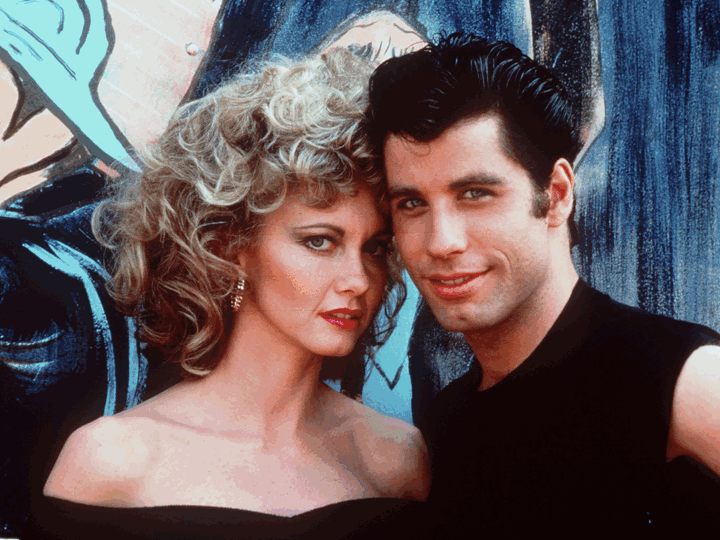2 NOTABLE UCLA FILM SERIES OFFER MORE CLASSICS
- Share via
One astonishing discovery follows another in UCLA’s “Classic Films From India” retrospective. Last week brought Guru Dutt’s superb “Sahib Bibi Aur Ghulam” (“Master, Mistress and Servant”), which screens again Sunday at 8 p.m. in Melnitz Theater. And now we’re treated to Dutt’s equally stunning “Pyaasa” (“The Seeker”), which screens Saturday at 8 p.m.
How appropriate it is that Dutt plays a poet in this 1957 film, for it could scarcely be more poetic itself. His poet is in the classic predicament of struggling to survive and to get published.
So scornful of his efforts are his older brothers--they’re even worse than Cinderella’s stepsisters--that they sell his work for scrap paper. But the paper is purchased by the most exquisite prostitute (Mala Sinha) who ever walked the streets of Calcutta--and who is greatly moved by what’s written on them. Also appreciative of them is the poet’s former but still adoring love (Waheeda Rehman), but she has married for money--indeed, to the very publisher who rejects the poet’s work as “trash” because he finds it too serious.
Now all these elements--and many more--generate much emotion, but Dutt is so intense a film maker that “Pyaasa” overwhelms in its authentic passion and beauty. “Pyaasa” is as romantic and as stylized as an Ophuls film, which it resembles in its glorious tracking shots. The poet’s struggle develops more twists and heart tugs than a soap opera only to give way on an unexpected and ironic consideration of the curse of celebrity for the serious artist. In its innocent way it is also a commentary, albeit probably unintended, on the supreme ego of that artist. Clearly, “Pyaasa” was a very personal film for its tormented maker, who died in 1962 in his 37th year. For full schedule of Dutt films: (213) 825-9261, 825-2581.
The UCLA Film Archives’ other notable series, “Technicolor: The Glory Years,” which has been as enjoyable as it has been consciousness-raising about the uses of color, continues Thursday at 7:30 p.m. in Melnitz Theater with John Huston’s “Moulin Rouge” (1952) and “Moby Dick” (1956), two triumphant collaborations between Huston and cinematographer Oswald Morris.
What timeless, intelligent , popular entertainments they are!
Along with his Josef Mengele in “The Boys of Brazil,” Gregory Peck’s Captain Ahab is perhaps his most chilling performance. With a whale tusk for a peg leg and a deep scar furrowing his handsome features, Peck, who makes splendid use of his deep voice, is a man crazed in his determination to destroy the great white whale that left him so badly maimed in a previous contest.
Huston and Ray Bradbury’s adaptation of the Herman Melville classic is not merely robust, as sea adventures are supposed to be, but also rich in a sense of man’s foolish pride in the face of nature and its fierce grandeur.
For “Moby Dick” Huston wanted the look of hand-tinted 19th-Century engravings, and to that end Technicolor printed a black-and-white and a color image together. Unfortunately, you will be able to see this striking effect in full force only in Reel 4, for the rest of the film is a new print struck from an old Eastmancolor negative, which creates warmer tones than intended. The best honor that could come to the director of “Prizzi’s Honor” (itself an excellent example in the use of color) would be for “Moby Dick” to be restored to the steely look Huston desired.
How fine is Jose Ferrer’s Henri de Toulouse-Lautrec, the cruelly crippled aristocrat who sought solace from pain and loneliness in liquor and immortalized the gaudy lowlife of Belle Epoque Montmartre in his posters and paintings.
To get the look of Toulouse-Lautrec’s work, Huston and Morris consulted Life photographer Eliot Elisofon, and the result is one of the most beautiful and poignant of all color films. Colette Marchand is the tart to whom the painter gave his love, Suzanne Flon is the elegant sophisticate whose appreciation of him arrived too late. Let’s not forget Zsa Zsa Gabor’s radiant, frivolous and irresistible Jane Avril, the toast of the Moulin Rouge. Not even Orson Welles in “A Touch of Evil” used Gabor so effectively. For phones, see above.
More to Read
Only good movies
Get the Indie Focus newsletter, Mark Olsen's weekly guide to the world of cinema.
You may occasionally receive promotional content from the Los Angeles Times.










